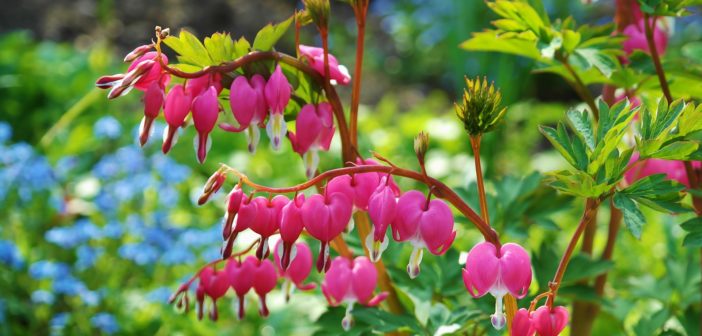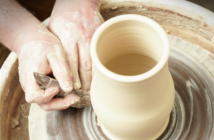Caring for Bleeding Hearts
By Steve Zimmerman
The spring equinox is upon us, and we know what that means—the beginning of another gardening season! This is the time of year when our gardens start to spring back to life (no pun intended). I always look forward to the arrival of the early bulbs and perennials as they begin to come to life once again in my gardens. One of my favorite early perennials is the bleeding heart.
The botanical name for it is Dicentra spectabilis. The word dicentra comes from the Greek word di, meaning two, and ketron, which means spur. Spectabilis means spectacular in Latin, and that is exactly what this plant is when it’s in full bloom.
The bleeding heart is native to China and was first introduced in the U.S. in the late 1800s. Robert Fortune, a Scottish horticulturist, is credited with discovering the bleeding heart in China and introducing it to England in 1842. He’s also credited with smuggling tea plants from China to India, helping to establish the tea industry there, and introducing the forsythia to the West.
In most garden centers today, you will most likely find several varieties of the bleeding heart. The old fashioned or common bleeding heart is a large perennial; its mature height and width can be 2.5 to 3 feet. This variety starts to appear in early March and is in full bloom by mid- to late-April. By mid-summer, it has died back and disappeared from the garden.
A smaller variety is the fringed bleeding heart or Dicentra eximia, which has a mature height and width of 12 to 15 inches. This variety has very delicate, fern-like leaves and blooms most of the spring and summer; it does not die back until fall. However, I do not think its bloom is nearly as spectacular as the old fashioned bleeding heart.
In today’s gardening market, you may find many hybrids of the bleeding heart. The color spectrum is usually pink to red. There is a white (alba) variety, but many think it’s not a very dependable plant.
Bleeding hearts like well-drained soil amended with peat moss and compost. They prefer partial shade but will tolerate full sun if the soil is kept moist. They will not do well in a windy area. You can propagate the bleeding heart by dividing its root clumps. This can be done in the early spring on plants that have been established for at least four seasons.
The bleeding heart makes an excellent addition to most gardens. Keep in mind that if you’re planting the old fashioned variety, it dies back after blooming and will leave a void in your garden. Consider planting shade-loving annuals after the bleeding heart has finished to fill the void.
The origin of its name is very obvious once you have seen the bloom. It looks just like a dripping heart. Another less familiar name is Lady in the Bath. If you turn you the bloom upside down and pinch it open, you will see exactly why. The bleeding heart’s bloom also contains hidden secrets. When examined very closely, one can find within each bloom a pair of earrings, a pair of ladies slippers, two rabbits, and a bottle of champagne.
Looking for the Lady in the Bath and discovering the four hidden secrets in the bleeding heart was a favorite activity of my children when they were young. At a recent family gathering, I found one of my 20-something daughters showing the secrets to one of her younger cousins. This summer, I hope to have the opportunity to show my first granddaughter. Happy gardening!
Steve and Laurie Zimmerman have owned and operated Zimmerman’s Azalea Gardens and Landscaping in Adams County since 1992. Visit their website at www.zaglandscaping.com.




